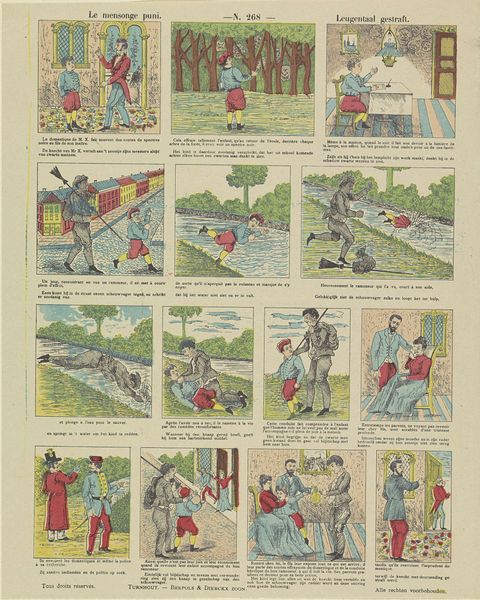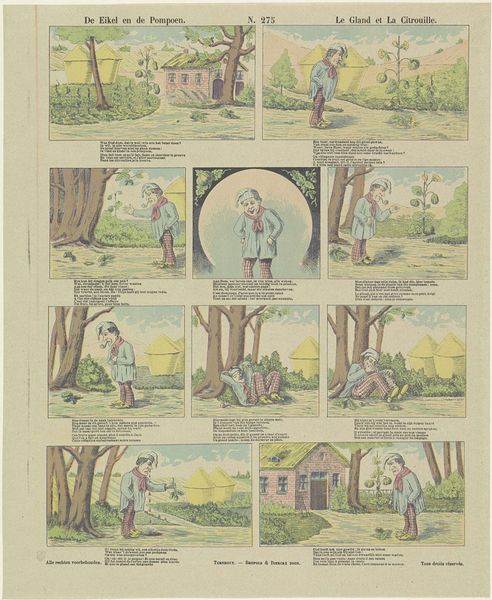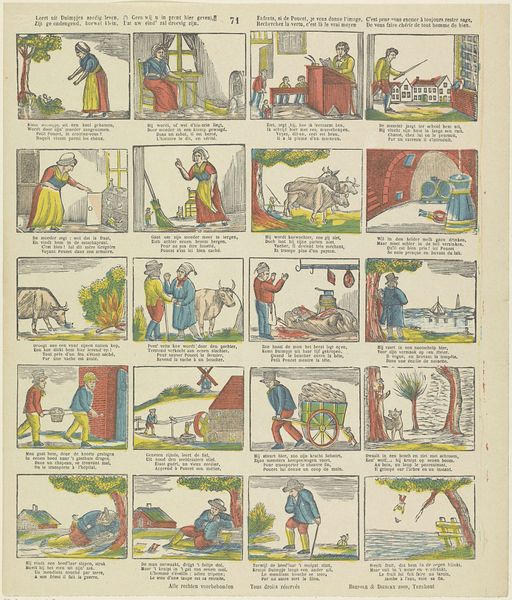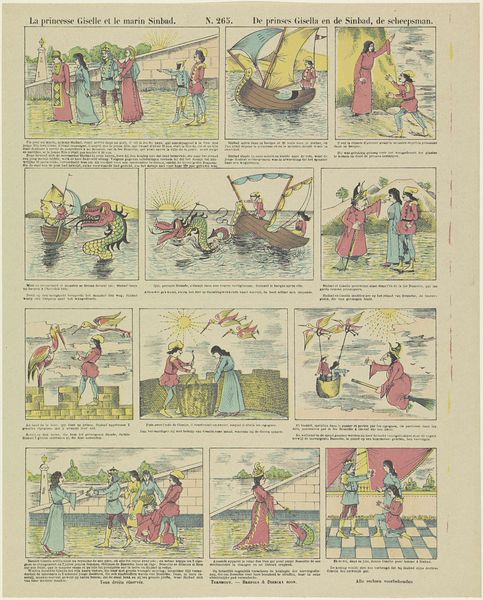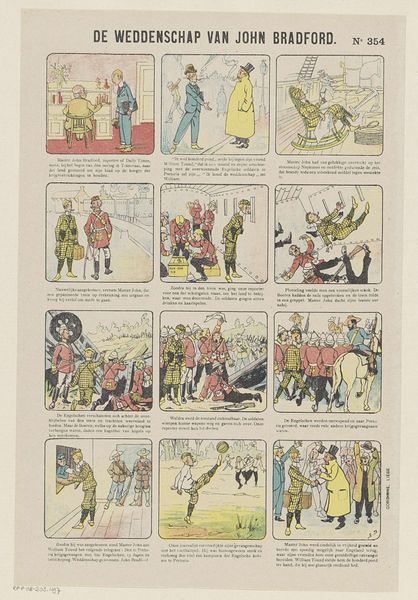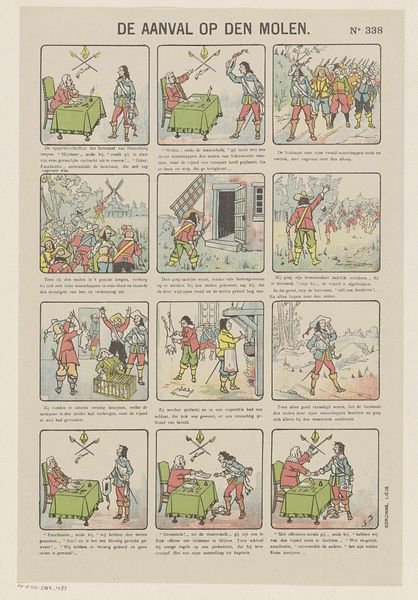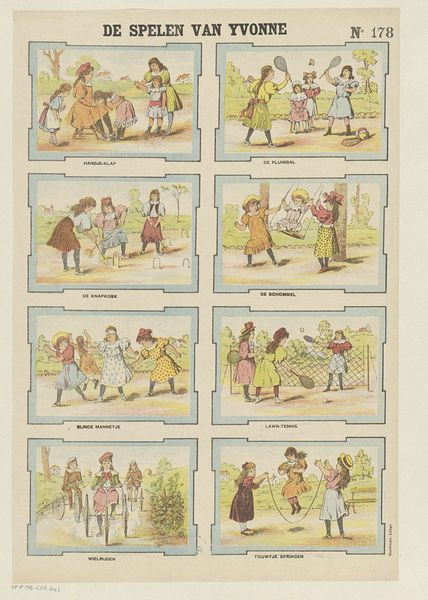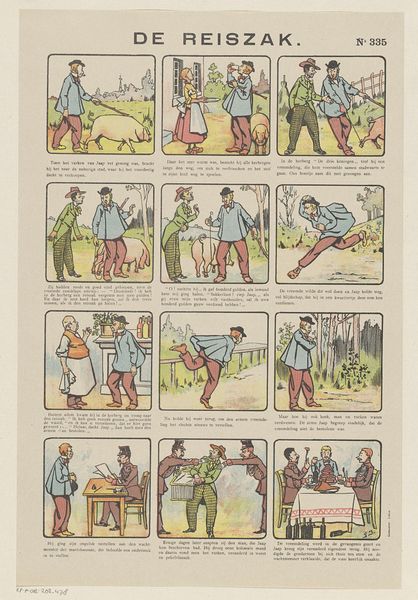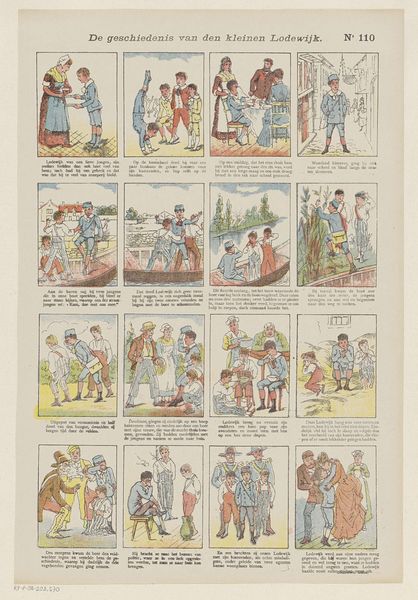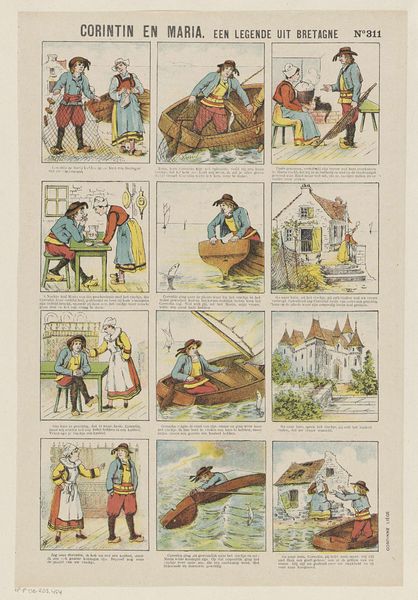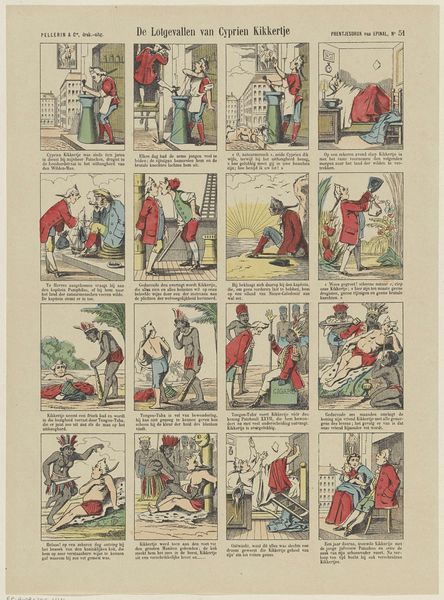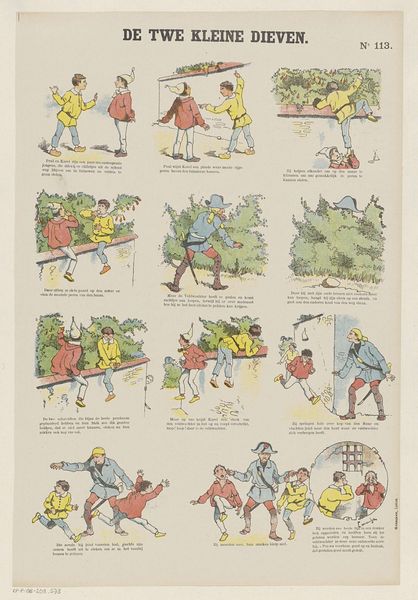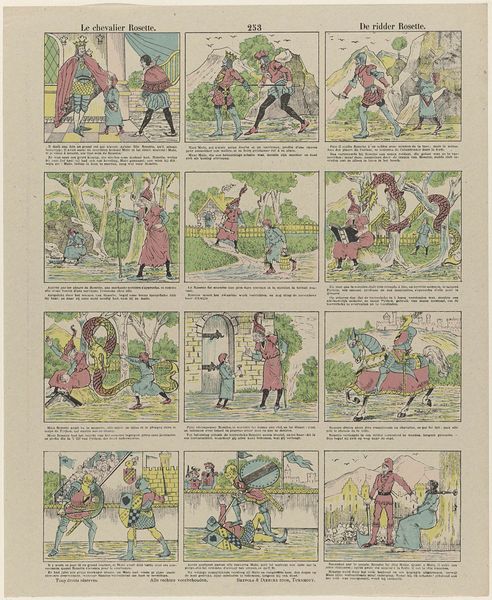
Rit bien qui rit le dernier / Loontje komt om zijn boontje 1833 - 1911
0:00
0:00
#
comic strip sketch
#
narrative-art
#
comic strip
# print
#
comic
#
genre-painting
Dimensions: height 380 mm, width 310 mm
Copyright: Rijks Museum: Open Domain
Curator: This is an interesting piece from Brepols & Dierckx Zoon, entitled "Rit bien qui rit le dernier / Loontje komt om zijn boontje," dating from 1833 to 1911. We are fortunate to view it here at the Rijksmuseum. Editor: It immediately strikes me as a rudimentary prototype for what would become the comic strip. It feels like an early experiment in sequential storytelling using the relatively inexpensive medium of print. Curator: Precisely. Its historical significance lies in its manifestation as accessible popular culture, revealing much about how stories were disseminated to a wider public beyond traditional art forms. Think about the growing print industry! Editor: Looking at the production value and recognizing the many processes to develop a print—etching or engraving, then application of color—we realize this seemingly simple "comic" was quite laborious. Note also the limited color palette. Curator: And the narratives portrayed here reflect the socio-political context of the time. Note the themes: land ownership, hunting rights…These weren't just silly drawings but reflections of property relations within early capitalist systems. Editor: Good point! It invites questions about access to resources and the labor required. Considering its affordability for the common consumer—one asks about the accessibility of narrative itself as a social practice in the hands of those normally kept from creating the story! Curator: It shows how visual narratives were taking shape to not only reflect reality but to solidify beliefs or behaviors. One should ask who truly has power over that influence, because regardless, narratives absolutely have material impacts. Editor: And to understand material impacts you can observe labor, commodity consumption, and popular access. Thanks for providing those lenses of appreciation; it highlights the tangible value beyond the art form itself.
Comments
No comments
Be the first to comment and join the conversation on the ultimate creative platform.
